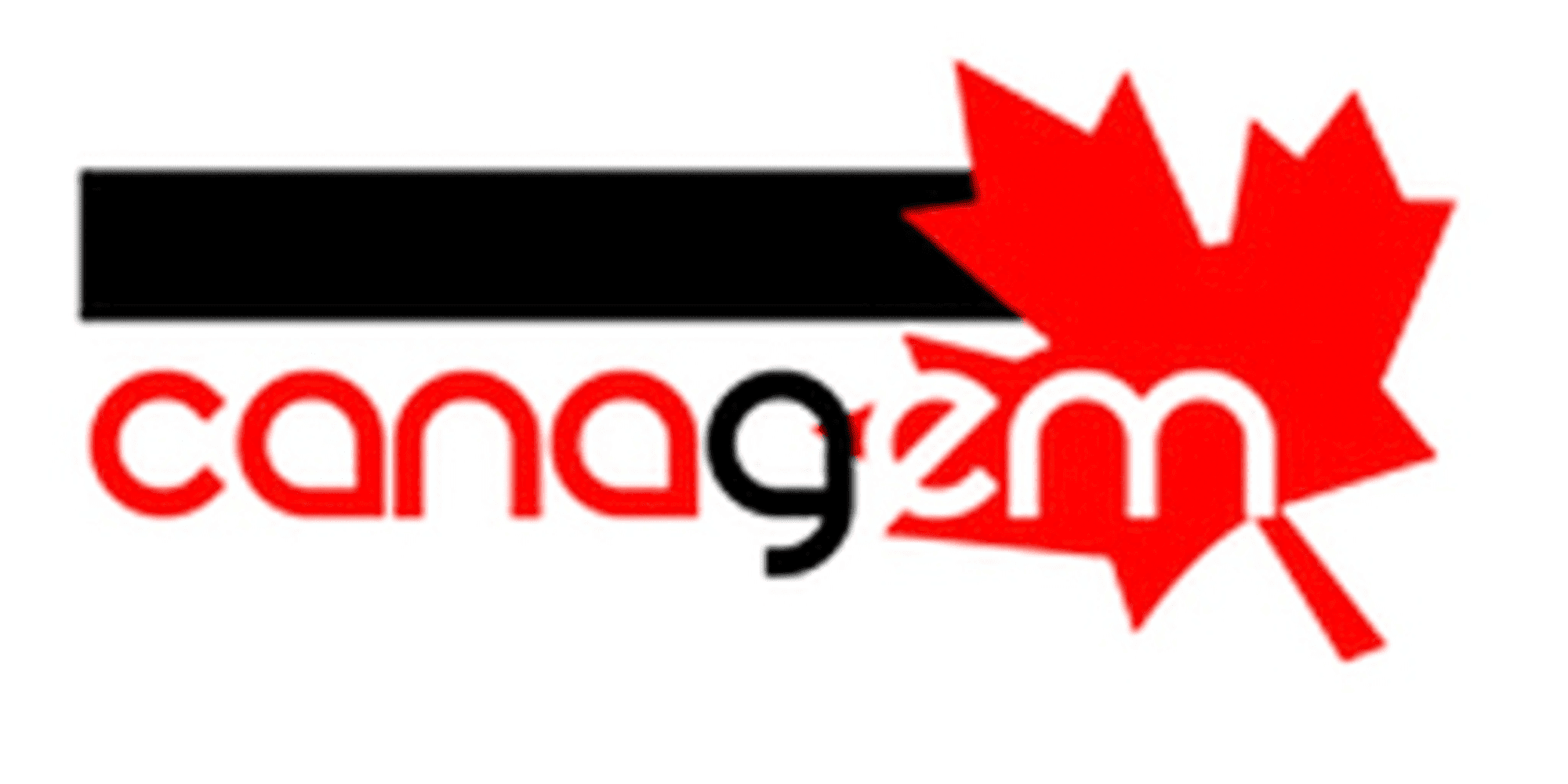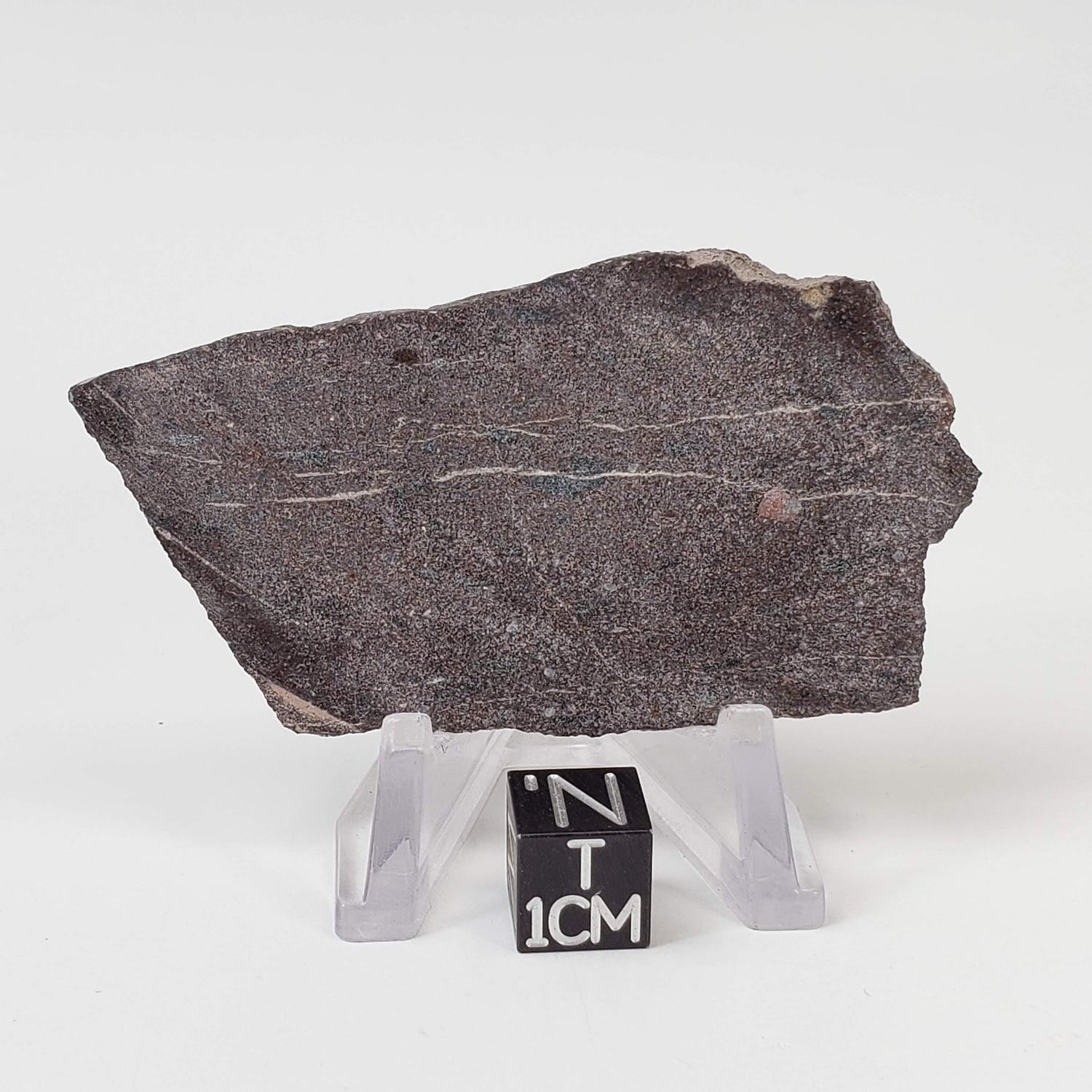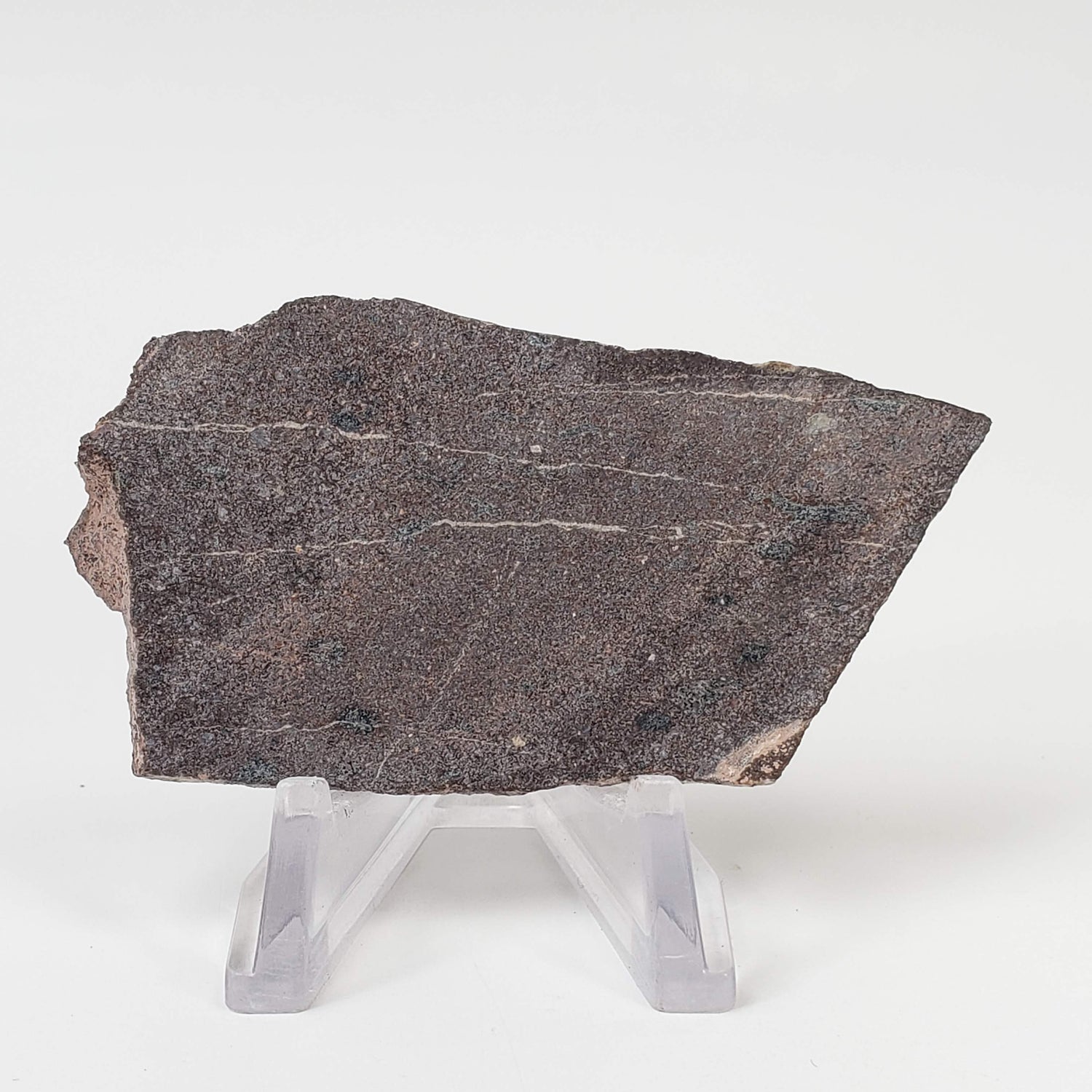Sort by:
108 products
108 products
This is a must have 22.7 gram Impactite from Norrbo, Sweden. Although not a meteorite, impactites are directly linked to them and their impacts and are probably going to be one of the rarest collection items you'll ever own. Impactite is a slag-like glassy object found on the surface of the earth, formed from rock melted by the impact of a meteorite.
The term impactite encompasses shock-metamorphosed target rocks, melts or suevites and mixtures of the two, as well as sedimentary rocks with significant impact-derived components and shocked mineral grains, tektites, anomalous geochemical signatures, etc. This impactite was formed approx. 89 million years ago when a meteorite crashed into the earth.
This gorgeous slice displays very well. It is amazingly light considering its mass of 58x32x10mm. Would be a beautiful addition to any new or existing collection. Comes with a Canagem Collection specimen card.



Libyan Desert Glass | Natural Impact Glass | 4.7 Grams | Authentic Impactite
$25.00 CAD
Unit price perLibyan Desert Glass | Natural Impact Glass | 4.7 Grams | Authentic Impactite
$25.00 CAD
Unit price perThis is a rare and fantastic 4.7 gram Libyan Desert Glass from Kuffra, Libya, with dimensions of 27x17x11 mm. Although its exact origin is still debated, the leading theory suggests it was formed by a high-energy event, such as a meteoric impact or airburst, that melted the desert sand directly where it lay, without being ejected into the atmosphere and re-entering. This results in different physical characteristics compared to tektites.
Libyan Desert Glass is found specifically in the Great Sand Sea of the Eastern Sahara, within a more localized area spanning parts of western Egypt and eastern Libya. Characterized by its yellow to greenish-yellow color, it lacks the aerodynamic shapes of tektites and often appears as irregularly shaped pieces. It is almost pure silica (around 98%) with very few impurities. Throughout history, it has been regarded as a mystical and powerful material, sometimes used in talismans and amulets.
This piece displays extremely well and is a quality translucent specimen. It has an aesthetic shape with a beautiful wind eroded body from the years spent in the Desert. Would be a beautiful addition to any new or existing collection. Comes with a Canagem Collection specimen card.
This is a great 36.2 gram Impact Melt Breccia from the Gardnos Crater in Norway. It is amazingly light considering its mass of 51x40x9mm. Although not a meteorite, impactites are directly linked to them and their impacts and are probably going to be one of the rarest collection item you'll ever own. Impactite is a slag-like glassy object found on the surface of the earth, formed from rock melted by the impact of a meteorite.
The term impactite encompasses shock-metamorphosed target rocks, melts or suevites and mixtures of the two, as well as sedimentary rocks with significant impact-derived components and shocked mineral grains, tektites, anomalous geochemical signatures, etc.
This impactite was formed between 385 and 900 million years ago in Precambrian time when a meteorite crashed into the earth making a ~5 kilometers wide crater locally known as the Hallingdal Impact Crater.
Would be a beautiful addition to any new or existing collection. Comes with a Canagem Collection specimen card.


Libyan Desert Glass | Natural Impact Glass | 4.4 Grams | Authentic Impactite
$23.00 CAD
Unit price perLibyan Desert Glass | Natural Impact Glass | 4.4 Grams | Authentic Impactite
$23.00 CAD
Unit price perThis is a rare and fantastic 4.4 gram Libyan Desert Glass from Kuffra, Libya, with dimensions of 30x19x12 mm. Although its exact origin is still debated, the leading theory suggests it was formed by a high-energy event, such as a meteoric impact or airburst, that melted the desert sand directly where it lay, without being ejected into the atmosphere and re-entering. This results in different physical characteristics compared to tektites.
Libyan Desert Glass is found specifically in the Great Sand Sea of the Eastern Sahara, within a more localized area spanning parts of western Egypt and eastern Libya. Characterized by its yellow to greenish-yellow color, it lacks the aerodynamic shapes of tektites and often appears as irregularly shaped pieces. It is almost pure silica (around 98%) with very few impurities. Throughout history, it has been regarded as a mystical and powerful material, sometimes used in talismans and amulets.
This piece displays extremely well and is a quality translucent specimen. It has an aesthetic shape with a beautiful wind eroded body from the years spent in the Desert. Would be a beautiful addition to any new or existing collection. Comes with a Canagem Collection specimen card.


Libyan Desert Glass | Natural Impact Glass | 3.9 Grams | Authentic Impactite
$21.00 CAD
Unit price perLibyan Desert Glass | Natural Impact Glass | 3.9 Grams | Authentic Impactite
$21.00 CAD
Unit price perThis is a rare and fantastic 3.9 gram Libyan Desert Glass from Kuffra, Libya, with dimensions of 29x18x8 mm. Although its exact origin is still debated, the leading theory suggests it was formed by a high-energy event, such as a meteoric impact or airburst, that melted the desert sand directly where it lay, without being ejected into the atmosphere and re-entering. This results in different physical characteristics compared to tektites.
Libyan Desert Glass is found specifically in the Great Sand Sea of the Eastern Sahara, within a more localized area spanning parts of western Egypt and eastern Libya. Characterized by its yellow to greenish-yellow color, it lacks the aerodynamic shapes of tektites and often appears as irregularly shaped pieces. It is almost pure silica (around 98%) with very few impurities. Throughout history, it has been regarded as a mystical and powerful material, sometimes used in talismans and amulets.
This piece displays extremely well and is a quality translucent specimen. It has an aesthetic shape with a beautiful wind eroded body from the years spent in the Desert. Would be a beautiful addition to any new or existing collection. Comes with a Canagem Collection specimen card.


Stevns Klint KT-boundary clay | 17.7 Grams | UNESCO World Heritage | Zealand, Denmark
$187.00 CAD
Unit price perStevns Klint KT-boundary clay | 17.7 Grams | UNESCO World Heritage | Zealand, Denmark
$187.00 CAD
Unit price perThis is a great 17.7 gram KT-boundary clay from Zealand, Denmark, a UNESCO World Heritage site. What makes Stevns Klint a UNESCO site inscribed in 2014 is the visible layer of fish clay and exceptional fossil record at the K-T boundary (Cretaceous-Paleogene boundary) along the cliff. The KT-boundary clay at Stevns Klint is both impactite and a deposit containing fossils. It is considered impactite because the layer is composed of debris from the Chicxulub meteorite impact, including the iridium-rich "fish clay," which is evidence of the extraterrestrial event. It is also rich in fossils because the clay and surrounding rock strata contain evidence of the mass extinction and the recovery of marine life that followed.
Stevns Klint, known as the Cliffs of Stevns in English, is a white chalk cliff located some 6 km (3.7 mi) southeast of Store Heddinge on the Danish island of Zealand. Stretching 17 km (11 mi) along the coast, it is of geological importance as one of the best exposed Cretaceous-Tertiary (K/T) boundaries in the world. Subject to frequent erosion, the cliff rises to a height of up to 40 m (130 ft).
Stevns Klint holds exceptional evidence of the Chicxulub meteorite impact that triggered the fifth mass extinction around 66 million years ago. This catastrophic event wiped out the dinosaurs and nearly 50% of all life on Earth, that paved the way of life as we know it today.
Most offerings are of macro size specimen so this is a rarely seen large example coming from the world renown Mr Christian Anger of Austria. Would be a beautiful addition to any new or existing collection. Comes with a Austromet and a Canagem Collection specimen card.
Indochinite is a variety of the mineral tektite, which is a natural glass formed by the intense heat and pressure of a meteorite impact. These tektites are usually found as small, aerodynamically shaped objects, often teardrop or irregular in shape, resulting from the molten material solidifying as it cooled rapidly after being ejected from the impact site.
Indochinites are believed to have formed around 780,000 to 800,000 years ago, following a significant meteorite impact event that likely created the Southeast Asian tektite strewn field. The strewn field is quite large, and the tektites can be found scattered over a vast area which includes Vietnam, Laos, and Thailand.
This piece displays very well, showing multiple characteristics of its origin. The specimen has a weigh of 8 grams and dimensions of 24x18x15. Comes with a Canagem Collection specimen card.


Libyan Desert Glass | Natural Impact Glass | 16.5 Grams | Authentic Impactite
$85.00 CAD
Unit price perLibyan Desert Glass | Natural Impact Glass | 16.5 Grams | Authentic Impactite
$85.00 CAD
Unit price perThis is a rare and fantastic 16.5 gram Libyan Desert Glass from Kuffra, Libya, with dimensions of 37x28x19 mm. Although its exact origin is still debated, the leading theory suggests it was formed by a high-energy event, such as a meteoric impact or airburst, that melted the desert sand directly where it lay, without being ejected into the atmosphere and re-entering. This results in different physical characteristics compared to tektites.
Libyan Desert Glass is found specifically in the Great Sand Sea of the Eastern Sahara, within a more localized area spanning parts of western Egypt and eastern Libya. Characterized by its yellow to greenish-yellow color, it lacks the aerodynamic shapes of tektites and often appears as irregularly shaped pieces. It is almost pure silica (around 98%) with very few impurities. Throughout history, it has been regarded as a mystical and powerful material, sometimes used in talismans and amulets.
This piece displays extremely well and is a quality translucent specimen. It has an aesthetic shape with a beautiful wind eroded body from the years spent in the Desert. Would be a beautiful addition to any new or existing collection. Comes with a Canagem Collection specimen card.


Libyan Desert Glass | Natural Impact Glass | 50.9 Grams | Authentic Impactite
$240.00 CAD
Unit price perLibyan Desert Glass | Natural Impact Glass | 50.9 Grams | Authentic Impactite
$240.00 CAD
Unit price perThis is a rare and fantastic 50.9 gram Libyan Desert Glass from Kuffra, Libya, with dimensions of 65x44x19 mm. Although its exact origin is still debated, the leading theory suggests it was formed by a high-energy event, such as a meteoric impact or airburst, that melted the desert sand directly where it lay, without being ejected into the atmosphere and re-entering. This results in different physical characteristics compared to tektites.
Libyan Desert Glass is found specifically in the Great Sand Sea of the Eastern Sahara, within a more localized area spanning parts of western Egypt and eastern Libya. Characterized by its yellow to greenish-yellow color, it lacks the aerodynamic shapes of tektites and often appears as irregularly shaped pieces. It is almost pure silica (around 98%) with very few impurities. Throughout history, it has been regarded as a mystical and powerful material, sometimes used in talismans and amulets.
This piece displays extremely well and is a quality translucent specimen. It has an aesthetic shape with a beautiful wind eroded body from the years spent in the Desert. Would be a beautiful addition to any new or existing collection. Comes with a Canagem Collection specimen card.
Indochinite is a variety of the mineral tektite, which is a natural glass formed by the intense heat and pressure of a meteorite impact. These tektites are usually found as small, aerodynamically shaped objects, often teardrop or irregular in shape, resulting from the molten material solidifying as it cooled rapidly after being ejected from the impact site.
Indochinites are believed to have formed around 780,000 to 800,000 years ago, following a significant meteorite impact event that likely created the Southeast Asian tektite strewn field. The strewn field is quite large, and the tektites can be found scattered over a vast area which includes Vietnam, Laos, and Thailand.
This piece displays very well, showing multiple characteristics of its origin. The specimen has a weigh of 40.2 grams and dimensions of 38x35x23. Comes with a Canagem Collection specimen card.


Henbury Impactite | Vesicular Impact Glass | 7.89 Gr | Awesome Rare | Henbury N.T. Australia
$31.00 CAD
Unit price perHenbury Impactite | Vesicular Impact Glass | 7.89 Gr | Awesome Rare | Henbury N.T. Australia
$31.00 CAD
Unit price perThis is an outstanding Impact Melt Glass specimen or bomb weighing 7.89 grams. Its dimensions are 28x28x22 mm. Although not a meteorite, impactites are directly linked to them and their impacts.
This Henbury glass, or more specifically vesicular impactite, was found in the Northern Territory of Australia. Thirteen craters were found 8 miles southwest of the town of Henbury, the largest of which was 720 x 360 feet. Henbury impactite was formed by a meteorite impact that occurred around 4,700 years ago. The meteorite is believed to have exploded upon entering the Earth's atmosphere, creating multiple craters which produced the impact glass.
Impactite is a slag-like glassy object found on the surface of the earth, formed from rock melted by the impact of a meteorite. The term encompasses shock-metamorphosed target rocks, melts or suevites and mixtures of the two, as well as sedimentary rocks with significant impact-derived components and shocked mineral grains, tektites, anomalous geochemical signatures, etc.
This piece displays extremely well. It is amazingly light considering its mass. It has a unique hollow sound when you tap it. This Australian find is very well shaped and preserved. These pieces are becoming more difficult to acquire so this is a good time to get a fine specimen. Would be a beautiful addition to any new or existing collection. Will come with a Canagem specimen card.
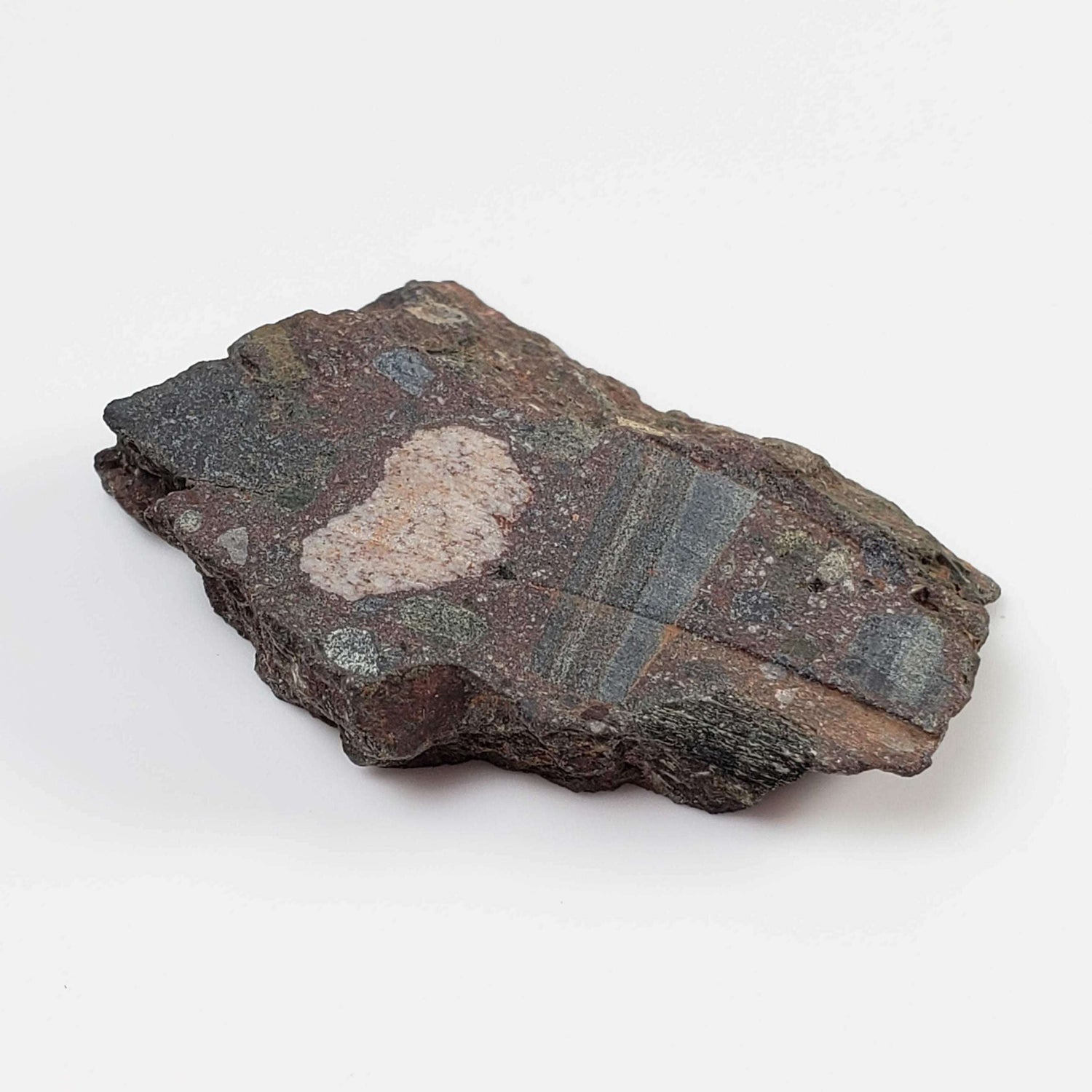

Terny Astrobleme Impactite | 14.33 Grams | Slice | Cherkasy Region | Ukraine
$160.00 CAD
Unit price perTerny Astrobleme Impactite | 14.33 Grams | Slice | Cherkasy Region | Ukraine
$160.00 CAD
Unit price perThis is a must have Impactite from the famous Terny Astrobleme, Ukrainian Shield and Crater in Ukraine. It weighs 14.33 grams and measures 42x32x9 mm. Although not a meteorite, impactites are directly linked to them and their impacts and are probably going to be one of the rarest collection pieces you'll ever own. The Terny impactites are important geological specimens that are recognized by the scientific community as evidence of asteroid or comet impacts on Earth.
The Terny astrobleme is a geological formation located in the Cherkasy region of Ukraine. It is believed to be the result of a meteorite impact that occurred approximately 65 million years ago during the Late Cretaceous period. The impact formed a crater that is estimated to be around 6 kilometers in diameter, although it is largely eroded and filled in with sediment.
The Terny astrobleme is an important geological site for studying the effects of meteorite impacts on the Earth's surface and the resulting geological processes that occur. It has been the subject of numerous scientific studies, and specimens of the impactite rocks found at the site have been collected and analyzed for their mineralogical and chemical properties.
Would be a beautiful addition to any new or existing collection. Comes with a Canagem Collection specimen card.
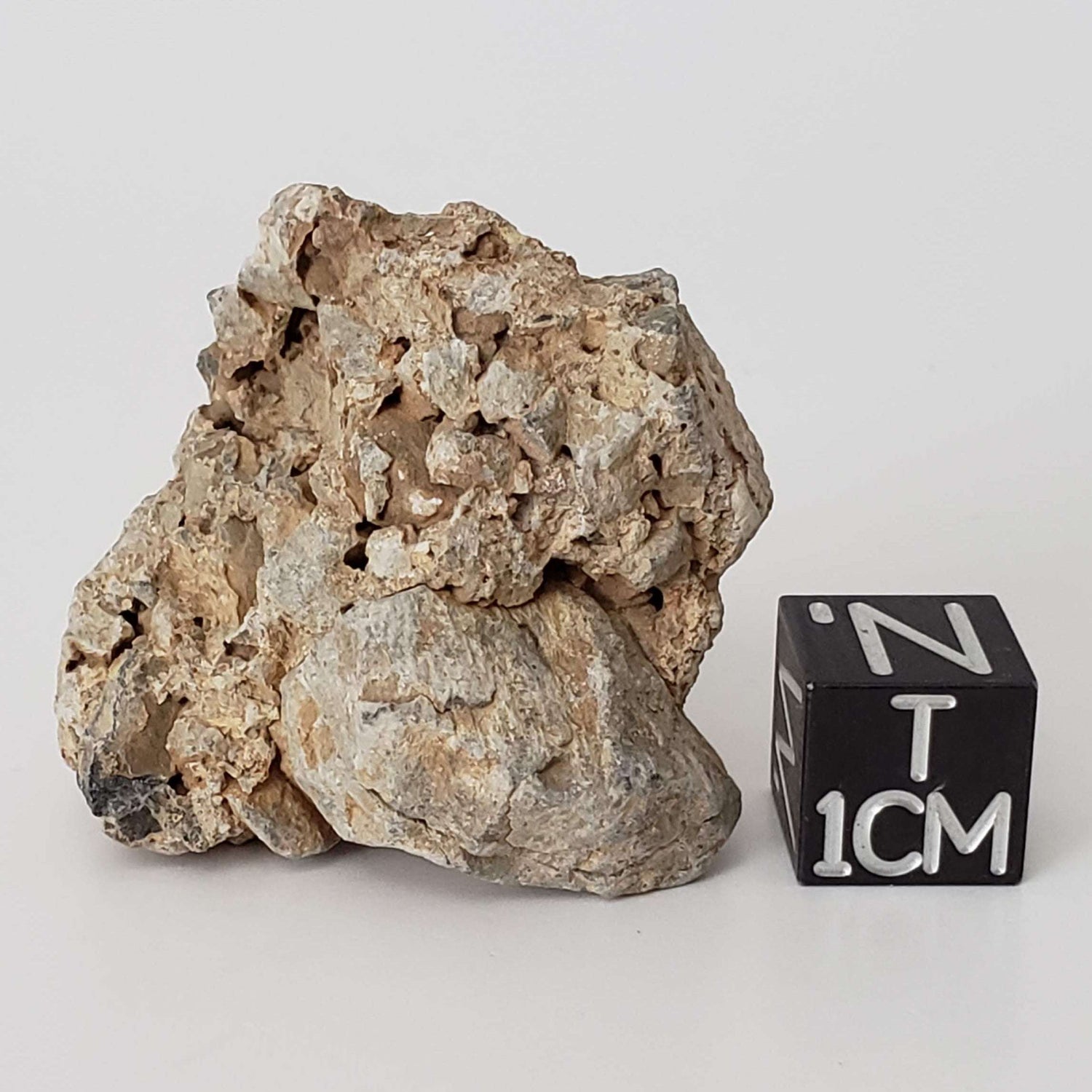

Impactite Monomict Breccia | 16.8 grams | Agoudal, Imilchil Structure | Morocco
$27.00 CAD
Unit price perImpactite Monomict Breccia | 16.8 grams | Agoudal, Imilchil Structure | Morocco
$27.00 CAD
Unit price perThis is a must have 16.8 gram Impactite, monomict impact breccia from the Agoudal, Imilchil impact structure, Morocco. Although not a meteorite, impactites are directly linked to them and their impacts and are probably going to be one of the rarest collection items you'll ever own. Impactite is a slag-like glassy object found on the surface of the earth, formed from rock melted by the impact of a meteorite.
The term impactite encompasses shock-metamorphosed target rocks, melts or suevites and mixtures of the two, as well as sedimentary rocks with significant impact-derived components and shocked mineral grains, tektites, anomalous geochemical signatures, etc. According to the state of conservation of the meteorite into the sedimentary layers "Soltanian" and the dating of ancient lake sediments of the Isli lake, we can estimate their age limit to 40,000 years.
More than 183 structures of meteoritical impacts are highlighted on the Earth, including only three reported dual impact craters. The impact craters of Isli and Tislit are respectively located at 10 km and 4 km from the Imilchil village on the Central High Atlas in Morocco at respective altitudes of 2272 and 2266 meters. They are spaced apart from each other by 9.4 km. The origin and the date of formation of these two lakes are still unknown today. Surveys undertaken near them and in the surrounding areas leads to believe that they correspond to a dual meteoritical impact crater.
Polymict and monomict breccias were observed at the edges of these craters but they don’t form big masses because of erosion. They consist of irregular fragments with millimeter and centimeter sizes, in a carbonate matrix. In the breccias collected on the southern edges of the Isli crater, we noted the presence of several shocked quartz grains in planar structures associated with rolling extinction, indicators of shock metamorphism.
This gorgeous specimen displays very well with a mass of 35x35x25 mm. Would be a beautiful addition to any new or existing collection. Comes with a Canagem Collection specimen card.
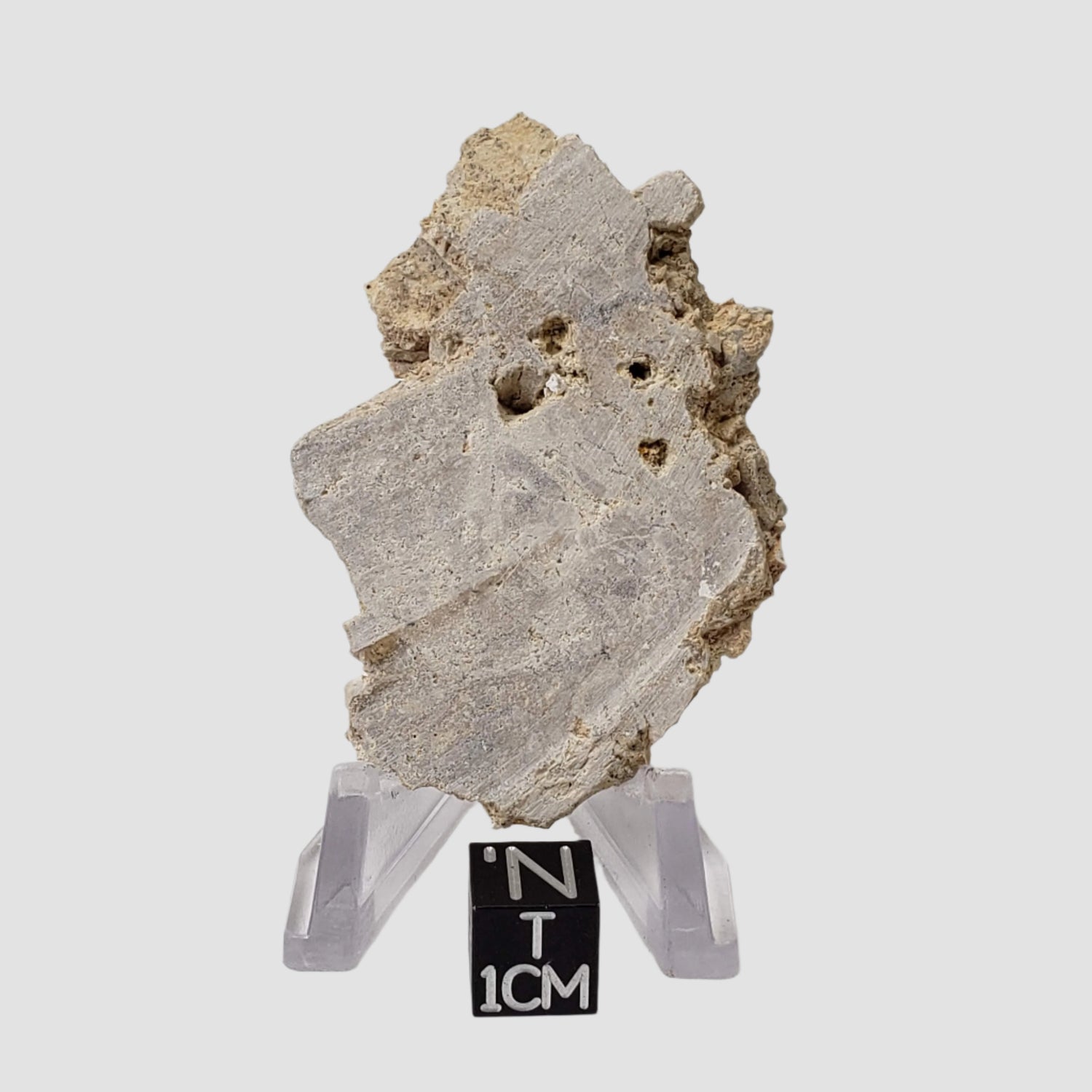
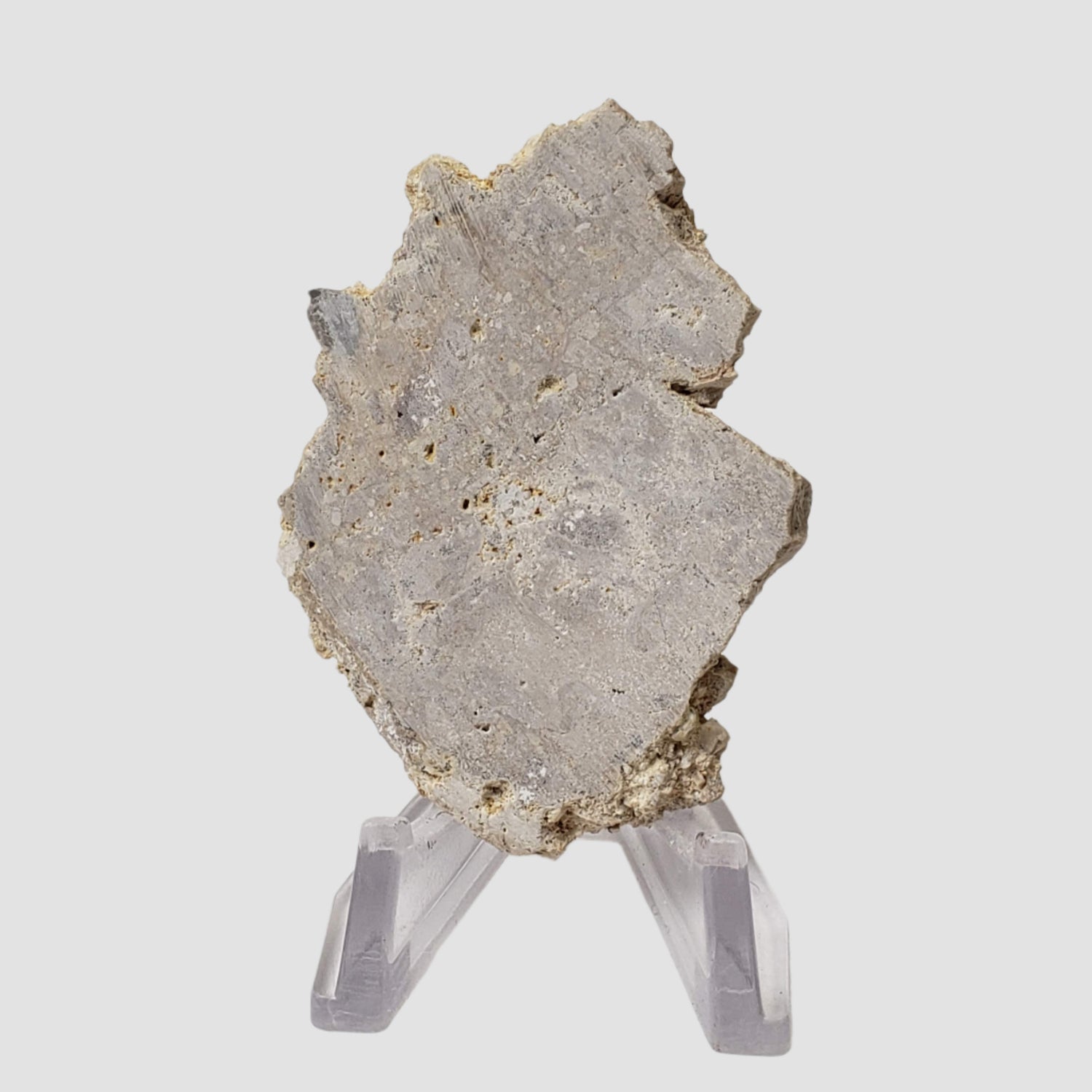
Impactite Fallback Breccia | Steinheim Basin Impact Structure | 21.3 grams | Slice | Ries, Germany
$14.00 CAD
Unit price perImpactite Fallback Breccia | Steinheim Basin Impact Structure | 21.3 grams | Slice | Ries, Germany
$14.00 CAD
Unit price perThis is a fantastic Impactite Fallback Breccia from Germany weighing 21.3 grams and measuring 60x41x6mm. Although not a meteorite, impactites and shatter cones are directly linked to them and their impacts. The Steinheim Basin today exhibits a distinct morphological depression that is ∼110 m deep and ∼3.5 km in diameter; the height of the central uplift totals to more than 140 m. The original size of the pristine crater is estimated to be ∼3.8 km with an original depth of ∼205 m.
As this drainless morphological depression was filled by lake sediments shortly after the impact, the primary crater morphology is widely preserved. The crater rim is formed by steeply inclined and intensely brecciated Upper Jurassic limestone blocks that also contain numerous shattered chert nodules, as well as some loose blocks of the host limestone. An impact breccia, referred to as the so-called ”Primäre Beckenbrekzie” (“primary basin breccia”) and interpreted as a “fallback breccia”, is known from many drillings in the Steinheim Basin.
Mainly composed of Middle to Upper Jurassic limestones, marls, mudstones, and sandstones, the impact breccia inside the morphological depression of the Steinheim Basin is overlain by lake sediments and is obviously preserved in its original thickness and position. This piece displays very well and is a very nice size showing multiple characteristics of its origin. Would make a beautiful addition to any collection.
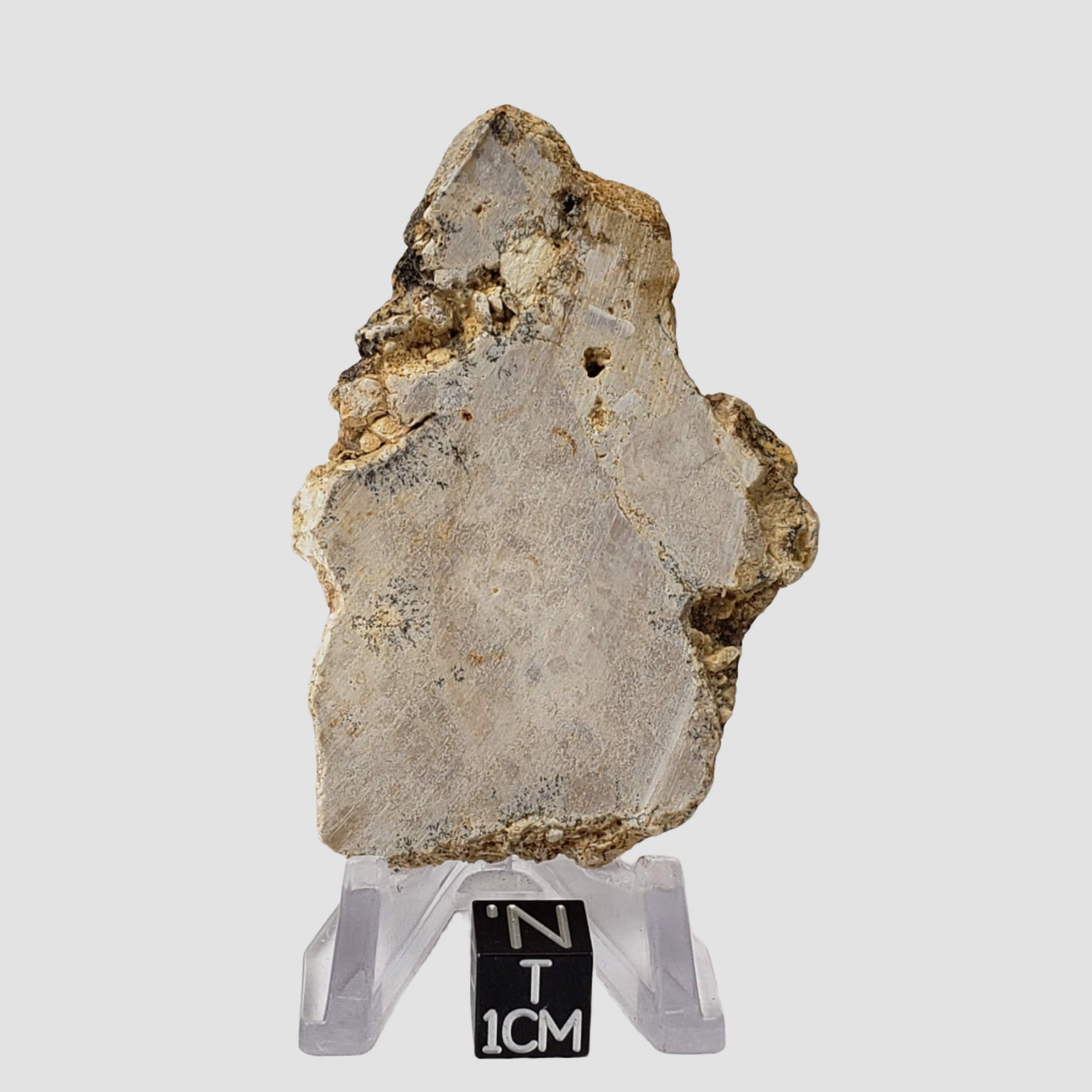
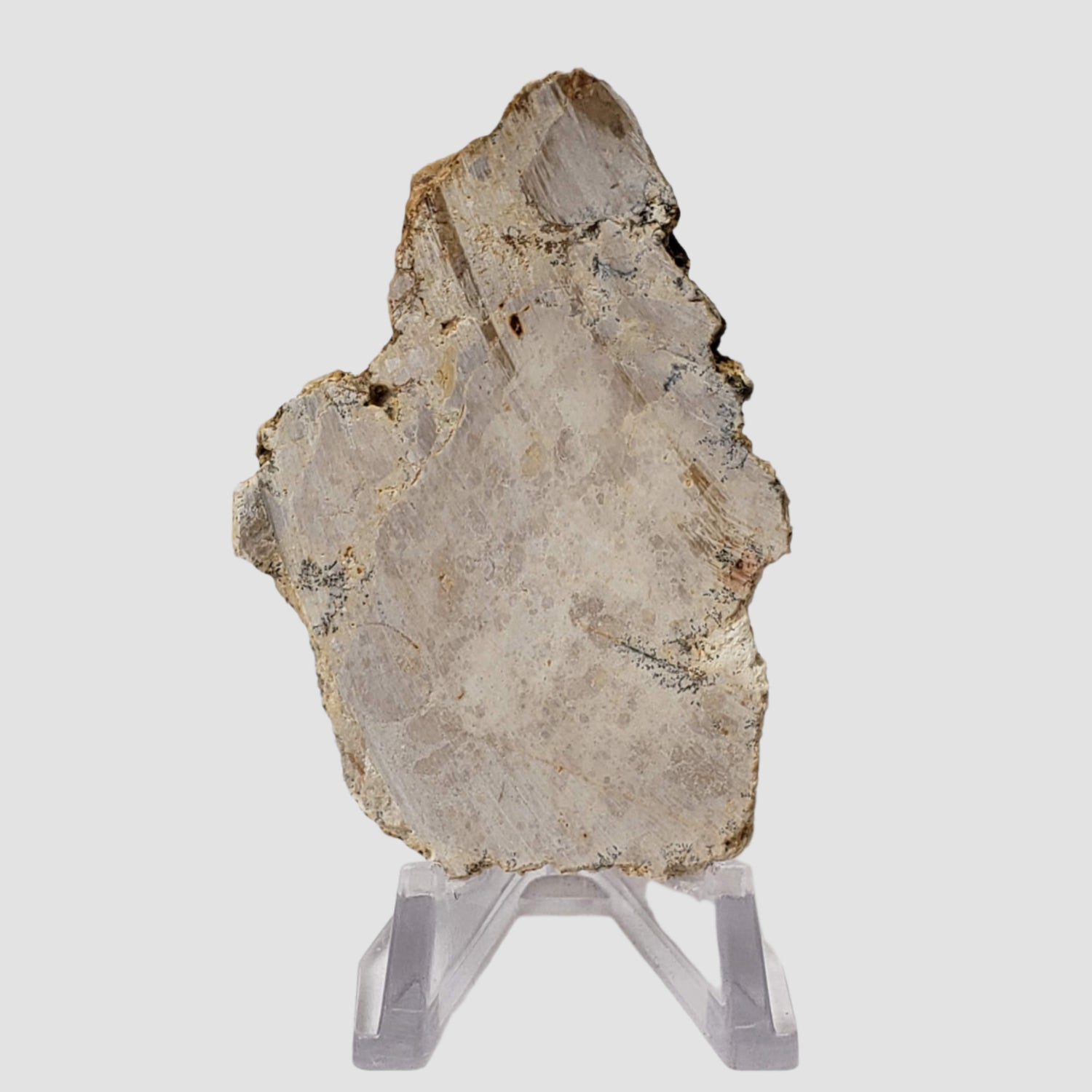
Impactite Fallback Breccia | Steinheim Basin Impact Structure | 32.9 grams | Slice | Ries, Germany
$20.00 CAD
Unit price perImpactite Fallback Breccia | Steinheim Basin Impact Structure | 32.9 grams | Slice | Ries, Germany
$20.00 CAD
Unit price perThis is a fantastic Impactite Fallback Breccia from Germany weighing 32.9 grams and measuring 70x48x7mm. Although not a meteorite, impactites and shatter cones are directly linked to them and their impacts. The Steinheim Basin today exhibits a distinct morphological depression that is ∼110 m deep and ∼3.5 km in diameter; the height of the central uplift totals to more than 140 m. The original size of the pristine crater is estimated to be ∼3.8 km with an original depth of ∼205 m.
As this drainless morphological depression was filled by lake sediments shortly after the impact, the primary crater morphology is widely preserved. The crater rim is formed by steeply inclined and intensely brecciated Upper Jurassic limestone blocks that also contain numerous shattered chert nodules, as well as some loose blocks of the host limestone. An impact breccia, referred to as the so-called ”Primäre Beckenbrekzie” (“primary basin breccia”) and interpreted as a “fallback breccia”, is known from many drillings in the Steinheim Basin.
Mainly composed of Middle to Upper Jurassic limestones, marls, mudstones, and sandstones, the impact breccia inside the morphological depression of the Steinheim Basin is overlain by lake sediments and is obviously preserved in its original thickness and position. This piece displays very well and is a very nice size showing multiple characteristics of its origin. Would make a beautiful addition to any collection.
This is a must have 27.4 gram Impact Melt Rock from the Stac Fada Member Impact Structure, NW Scotland. It measures 67x37x5 mm. Although not a meteorite, impactites are directly linked to them and their impacts and are probably going to be one of the rarest collection items you'll ever own. Impactite is a slag-like glassy object found on the surface of the earth, formed from rock melted by the impact of a meteorite.
The term impactite encompasses shock-metamorphosed target rocks, melts or suevites and mixtures of the two, as well as sedimentary rocks with significant impact-derived components and shocked mineral grains, tektites, anomalous geochemical signatures, etc.
This beautiful Impact melt rock comes from the Stac Fada impact structure in Scotland. The structure has an estimated age of about 1.2Ga (1,200 Ma). The Stac Fada Member of the Precambrian Stoer Group in Scotland has previously been described as volcanic in origin. However, shocked quartz and biotite provide evidence for high-pressure shock metamorphism, while chromium isotope values and elevated abundances of platinum group metals and siderophile elements indicate addition of meteoritic material. Thus, the unit is reinterpreted as having an impact origin.
This gorgeous slice displays very well. Would be a beautiful addition to any new or existing collection. Comes with two a Canagem Collection specimen card.

